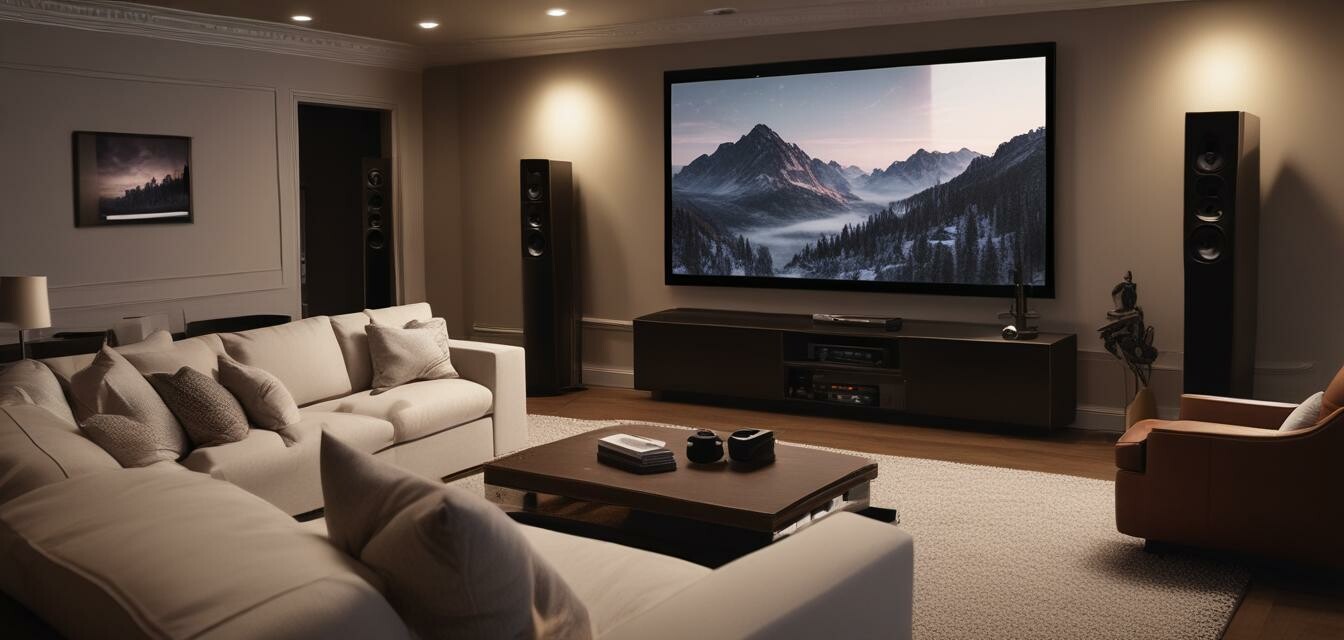
Essential Tips for Achieving the Best Viewing Angles
Key Takeaways
- Consider the height and distance from the screen when positioning seats.
- Use the right screen size based on your room dimensions for an immersive experience.
- Ensure that your seating arrangement promotes comfort and good sight lines.
- Optimize speaker positions to complement your viewing angles.
Setting up a home theater isn't just about having the best equipment; it's also about ensuring that every guest can enjoy the experience from their seat. The positioning of your components significantly affects the viewing angles and overall comfort. Below, we will explore essential tips that can help you achieve the best viewing angles in your home theater.
Understanding Viewing Angles
The ideal viewing angle can make all the difference in your home theater experience. Here are some important factors to consider:
- Screen Height: The center of your screen should be at eye level when you are seated.
- Distance from the Screen: The distance from your seating should align with the size of your screen.
- Seating Arrangement: The arrangement should promote equal viewing angles for all seats.
Calculating Optimal Distance
A good rule of thumb is to measure the distance from the screen to the seating area. Here’s a quick table to help you calculate:
| Screen Size (inches) | Optimal Viewing Distance (feet) |
|---|---|
| 50 | 6.5 - 8.5 |
| 65 | 8 - 10.5 |
| 75 | 9 - 11.5 |
| 85 | 10.5 - 13.5 |
Choosing the Right Screen Size
The right screen size will also play a vital role in achieving the best viewing angles. Here are some tips for choosing the perfect screen:
- Measure the width of your room to help determine the maximum screen size.
- Consider a screen size that fits your viewing distance for optimal comfort.
- Choose a screen ratio (16:9 for movies, 4:3 for classic TV shows) that suits your preferences.
Screen Height Considerations
The height at which your screen is mounted is crucial for comfort. Here are some tips:
- Mount the screen so the center is aligned with eye level (around 42 inches off the floor for most seated viewers).
- Reclining chairs or lower seating can require a lower mount for better angles.
- Keep the screen above the coffee table or any obstructive furniture.
Optimizing Seating Arrangement
Proper seating arrangement enhances the overall viewing experience. Follow these tips for arranging your seating:
- Use a staggered seating arrangement to avoid blocked views.
- Ensure that there’s adequate space between rows for comfort.
- Incorporate tiered seating if feasible for optimal sightlines.
Wiring and Connectivity
Efficient wiring can help maintain a clean look while improving functionality. Keep in mind:
- Hide cabling to avoid distractions and maintain aesthetics.
- Consider wireless connectivity solutions to minimize clutter.
- Label cables for ease of identification in case adjustments are needed.
Complementing Speaker Positions
Your audio setup should complement your viewing angles. Here are some essential tips:
- Position front speakers at ear level when seated.
- Place surround sound speakers to the side or slightly behind the seating area.
- Ensure that the subwoofer is positioned to allow for the best bass experience without overpowering the sound.
Testing Different Layouts
After setting up, be prepared to test different layouts to see what feels best. Consider the following:
- Change furniture arrangement to test different viewing angles.
- Use a measuring tape and have friends sit in different positions for feedback.
- Adjust speaker placements based on sound quality experienced in various areas.
Pros
- Enhanced viewing comfort for all guests.
- Improved sound experience that complements visual quality.
- Customizable setups for different room sizes and layouts.
Cons
- Time-consuming to perfect seating and placement.
- Initial costs may increase with the addition of ergonomic seating.
- Possible renovation needed for optimal audio/video placement.
Final Thoughts
Achieving the best viewing angles in your home theater involves careful consideration of various factors. From the appropriate screen height and distance to the optimal seating arrangement and speaker placement, these essential tips will help guide your setup process. Remember that a well-planned home theater focuses on comfort, function, and an immersive experience.
Beginner's Tips for Setting Up Your Home Theater
- Start with the basics: ensure all components are compatible.
- Test everything with various media types to find the best setup for you.
- Don’t hesitate to ask for professional advice if needed.
For more information on improving your home theater setup, check out our other articles on setup tips, home theater receivers, and projectors and screens.

